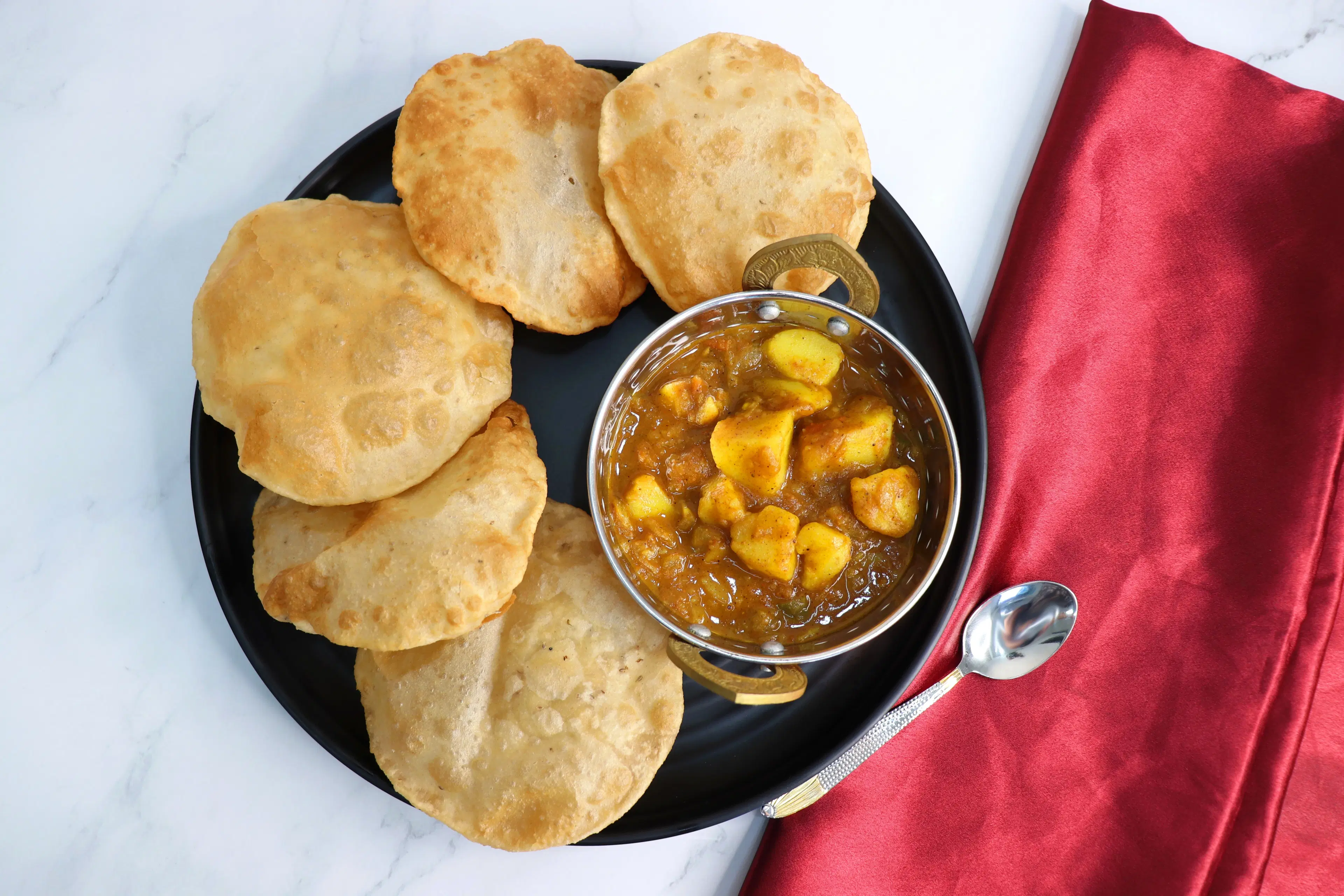
Flights
•03 min read

Imagine a land where every dish tells a story of tradition, culture, and community. In Jharkhand, food is more than just sustenance – it represents a celebration of heritage that seamlessly unites tribal roots with vibrant local influences. This culinary deep dive answers your most frequently asked questions on the Jharkhand food culture, its traditional dishes, street sensations, and secrets tucked away in tribal kitchens.
Jharkhand’s cuisine is defined by its connection with the land and the people who have passed down unique recipes for generations. The traditional food of Jharkhand uses local ingredients such as rice, lentils, and an array of forest produce, which collectively create a distinct taste profile. The food here does more than nourish; it tells a story of community gatherings and grand festivals where every meal is a vibrant expression of cultural identity.
Festivals like Sohrai and Karam are not just celebrations but also a time to share meals that carry the essence of the local traditions. During these events, tribal recipes take center stage, and dishes such as Litti Chokha, Dhuska, Pittha, Chilka Roti, and Malpua shine with their unique flavors. These dishes have been perfected over time, using techniques that honor both tradition and the natural bounty of the region.
When you talk about the local dishes of Jharkhand, temples of flavor like Litti Chokha and Dhuska immediately come to mind. Prepared with a blend of indigenous spices and techniques passed down through generations, these recipes are not only a treat to the taste buds but also a celebration of the state’s rich history.
The tribal food of Jharkhand holds a special place in this culinary landscape. Dishes such as Rugra, featuring wild mushrooms harvested from the forests, and Handia, a naturally fermented rice drink, showcase the innovative use of local ingredients. Even the desserts and sweets, from Til Barfi to Thekua and Mitha Khaja, speak volumes about the region’s knack for turning simple ingredients into memorable delights.

Jharkhand’s vibrant street food scene is a true reflection of its culinary soul. Whether you are wandering the lanes of a bustling market or exploring off-the-beaten-path villages, you are likely to encounter snacks like Dhuska and Aloo Chokha that are as wholesome as they are delicious. These street foods mirror the state’s time-honored cooking traditions and serve as an introduction to its broader culinary identity.
Beyond street stands, the regional cuisine of Jharkhand is deeply rooted in the staples of life. Rice, millet, and pulses form the backbone of many meals, while the use of local spices and ingredients helps elevate the flavor profile of traditional dishes. Whether in a humble home kitchen or a bustling street-side stall, every bite is a nod to the enduring legacy of regional flavors and techniques.
The preparation of Jharkhand cuisine is an art steeped in tradition. The use of clay ovens and slow-cooking methods helps bring out the deep, layered flavors in each dish. Techniques such as tempering, or tadka, add a finishing touch that transforms simple spices into an aromatic medley. These traditional methods provide a window into the history and culture of this remarkable region.
If you are eager to try your hand at these authentic dishes, consider starting with easy-to-follow recipes like Chilka Roti, Pittha, or the famed Malpua. Sourcing ingredients that capture the essence of local flavors is essential, and trying these recipes at home can transport you into the heart of Jharkhand’s culinary traditions.
Insight Corner: Did You Know? Jharkhand’s Culinary Secrets
Jharkhand’s cuisine is deeply tied to its agrarian roots and tribal heritage. Many dishes, such as Handia and Rugra, use ingredients sourced directly from the forest. This sustainable approach to cooking not only preserves nature's bounty but also reflects a community’s commitment to tradition and quality.

Litti Chokha, Dhuska, and Pittha are some of the most beloved foods of Jharkhand, each celebrated for its unique flavor and cultural importance.
Jharkhand’s culture is an amalgamation of tribal traditions, regional festivals, and artistic expressions where food plays a central role in storytelling and community bonding.
Local farmers grow staple crops like rice, maize, and pulses, while forest areas yield wild mushrooms and bamboo shoots, which are integral to many traditional recipes.
Sweet delicacies such as Til Barfi, Thekua, and Malpua are a staple during celebrations, revered for their rich taste and cultural resonance.
In summary, Jharkhand’s food culture is a treasure trove of flavors, ancestral techniques, and heartfelt traditions. Each dish, whether a tribal recipe or a beloved street food, connects the present with centuries-old customs. Through exploring these culinary wonders, we not only savor each bite but also connect with the soul of this vibrant region.
Traveling across India offers a chance to immerse oneself in diverse cultures, much like the journey into Jharkhand’s food heritage. Just as planning a trip with reliable flight support can open the door to new adventures, experiencing authentic Jharkhand cuisine can transform a meal into an unforgettable journey. With benefits such as earning NeuCoins on all bookings – where 1 NeuCoin equals 1₹ saving – Tata Neu makes it easier for the modern traveler to explore the richness of our country. The same care and dedication that enhances travel experiences also infuse every aspect of our approach to celebrating local culinary stories.